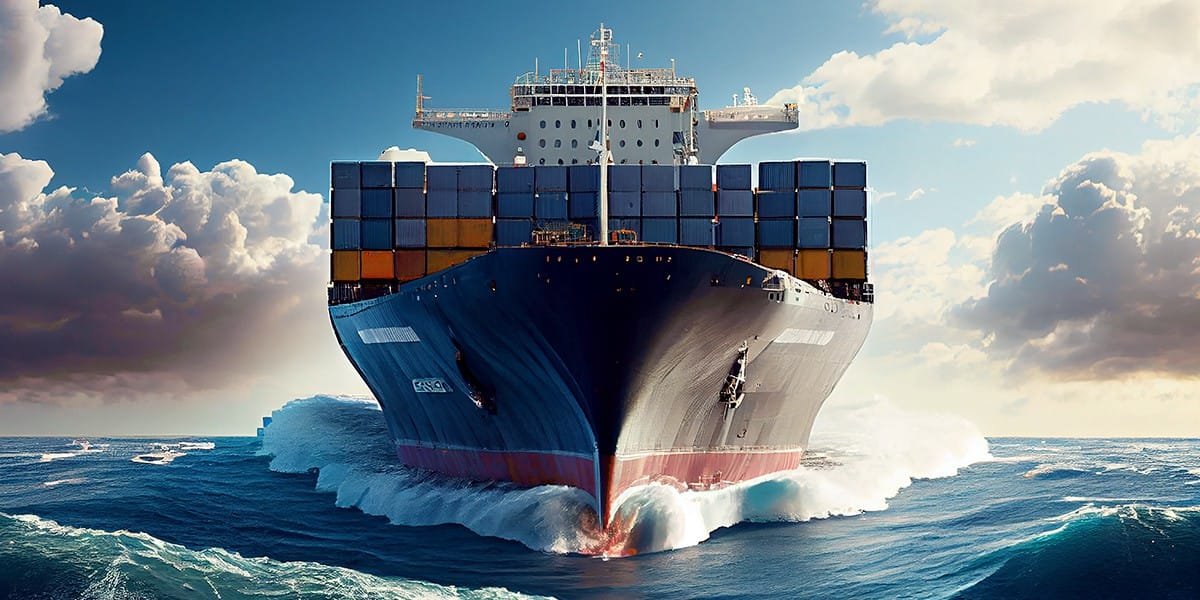
In 2021, China surpassed the USA to become Europe’s top trade partner.
Every year, millions of goods flow from China to Europe, a vast continent with 44 countries.
Europe boasts numerous large ports and shipping routes, handling substantial cargo traffic from China.
However, navigating the complexities of shipping from China to Europe can be challenging without proper knowledge and experience.
If you’re a business or individual seeking to ship goods from China to Europe, you’re in the right place.
This article serves as your comprehensive guide for shipping from China to Europe.
We cover everything you need to know for a smooth shipping experience.
Shipping Methods from China to Europe
When shipping goods from China to Europe, you have the flexibility to choose from various shipping methods, including air freight, rail, and sea shipping. This flexibility is a significant advantage that European countries offer over many others. The choice of shipping method depends on your requirements, the type of goods being shipped, and the specific country of destination. Let’s examine each method individually, including their costs and delivery times from China to Europe.
Express Freight from China to Europe.
When opting for express freight from China to Europe, you can expect fast and reliable delivery.
Express freight services, provided by international couriers like DHL, FedEx, and UPS, offer expedited shipping options.
Costs may vary depending on the courier and package weight, with prices typically higher than other shipping methods due to the speed and efficiency of delivery.
However, the advantage lies in the swift transit time, usually ranging from 3 to 7 business days, ensuring your goods reach Europe quickly and efficiently.
Air Freight Shipping from China to Europe
Air freight is a method of shipping cargo using airlines, with most European nations boasting highly developed airports supporting excellent air freight facilities. Opting for air freight when shipping from China to Europe serves as a viable alternative to express shipping, offering relatively fast delivery at lower prices.
Compared to land or sea freight, shipments sent via air freight carriers arrive more quickly, making them ideal for smaller and delicate shipments. However, air freight tends to be more expensive.
It’s essential to note that air freight shipping, unless using DDP shipping, isn’t a door-to-door service. Therefore, businesses should consider customs clearance requirements and import duties.
For items weighing between 300 and 500kg, you can secure the best air freight rates.
Ocean Freight Shipping from China to Europe
Ocean freight shipping from China to Europe is a popular and cost-effective option for transporting goods. With well-established maritime routes and ports, ocean freight offers reliable transportation for large volumes of cargo.
While ocean freight may take longer than air freight, it is significantly cheaper, making it ideal for businesses looking to reduce shipping costs. Large and heavy shipments, such as machinery or bulk commodities, are well-suited for ocean freight.
However, it’s essential to consider the longer transit times associated with ocean freight. Shipments sent via sea may take several weeks to reach their destination, so businesses should plan accordingly to account for the extended delivery times.
Overall, ocean freight shipping from China to Europe provides a cost-effective solution for transporting large volumes of goods, especially for items that are not time-sensitive.
FCL Container Ship from China to Europe
Shipping goods from China to Europe by sea can be efficiently done through FCL shipments, known as “full container load.” With FCL, the importer possesses an entire container and its contents. For shipments from China to Germany exceeding 15 cubic meters, FCL is the optimal choice. Due to fixed prices for sea shipping containers, FCL emerges as the most cost-effective method for transporting heavy cargo from China to Germany.
Despite containers being designed for large shipments, it’s not mandatory for your cargo to fill the entire container when opting for the full container load. Sometimes, shipping a half-container via FCL proves more economical than LCL.
FCL containers come in sizes of 20ft, 40ft, 40ft HQ, and 45ft HQ
